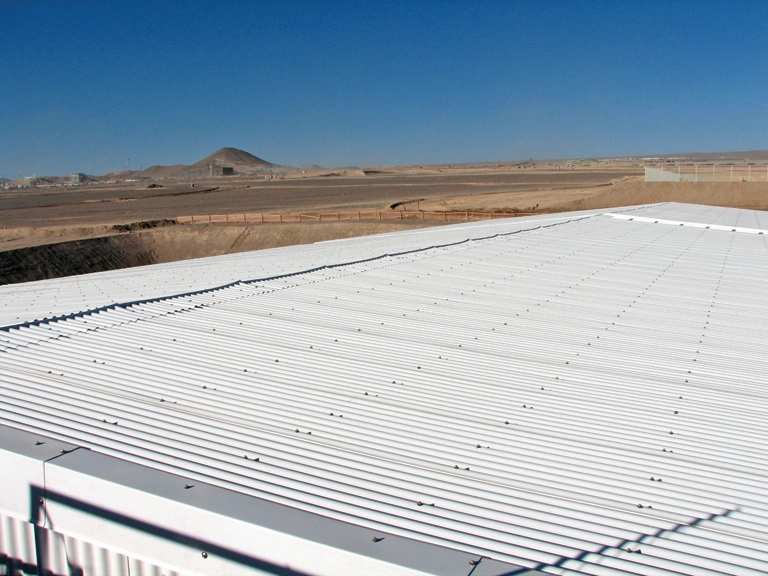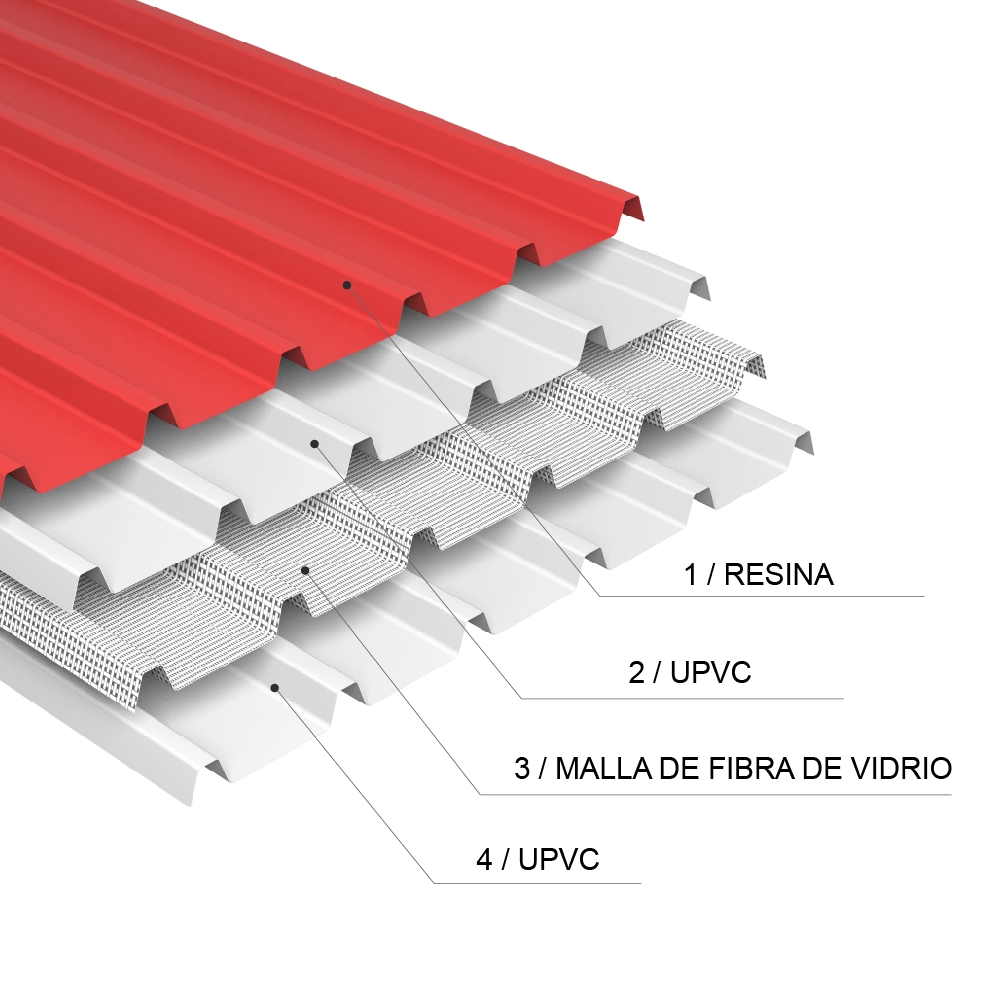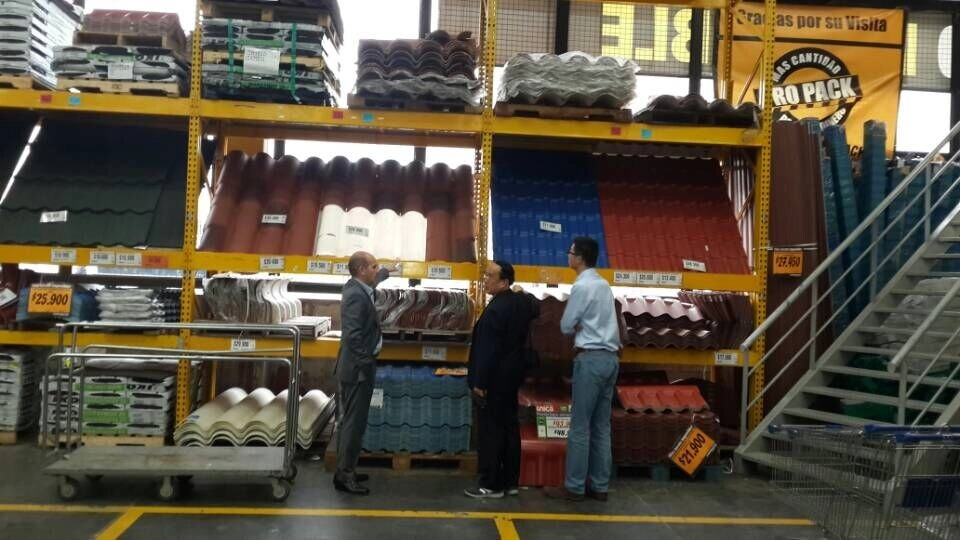
The Middle East is famous for its harsh weather. Very hot summers, intense UV rays, and dry conditions are common across the area. These conditions create a special problem for industrial buildings, especially for their roofs. Thus, choosing the right roofing material is very important. It affects energy savings, how long the roof lasts, and overall cost.
For big projects like factories, warehouses, and farms, the roof choice can greatly affect how well they run. Two common choices on the market are UPVC roofing sheets and composite fire-rated cladding. To make a smart decision, it’s important to understand what they offer, where they are used, and how they hold up in tough weather like in the Middle East.
UPVC (Unplasticized Polyvinyl Chloride) roofing sheets are made from hard PVC materials that are very strong and stand up well to the weather. They are made with a special process that lets them come in different thicknesses (ranging from 1.5mm to 3.0mm), colors, and lengths to fit what a project needs. Besides, they are used a lot in many kinds of industrial buildings because of their solid build and ability to insulate against heat.

UPVC roofing sheets can be used in many ways and are found in several industrial places:·
These items are mostly used for roofs and wall covers in homes, industrial sites, and commercial structures.

Glass fiber reinforced UPVC sheets are an improved version of regular UPVC materials. This special design puts a fiberglass net inside the sheet. What’s more, this makes the roof sheet much tougher. Its pulling strength, ability to take a hit, and power to hold weight are all better. It also resists weather changes more effectively.
UPVC roofing sheets are great at blocking heat. The heat transfer ability of PVC material is 0.325w/m.k. That number is tiny, about 1/2000th of colored steel sheets. This quality makes it very useful in hot places like the Middle East.
UPVC roofing sheets have a special ASA film on top. ASA is a kind of acrylic resin that resists UV light. This film helps the color stay bright for 8-10 years, a very important feature under the strong sun. Even after fading, it will not affect its usability. Its service life lasts more than 30 years.
These sheets fight off chemical damage from acid rain or salty air. PVC material is naturally rust-free and fights off chemicals. This makes it perfect for places by the sea or in the desert.
UPVC roofing sheets do not catch fire easily. They also put themselves out. Their fire rating is B1. This meets the safety rules for industrial areas.
The fiberglass inside makes the sheets stronger. Pulling strength goes up by 30%. Also, their ability to carry weight improves by 20%. This means you can have more space between support beams, and it’s still very safe.
UPVC roofing sheets also block sound. They can cut noise by 25-30 dB. First of all, this makes for a quieter space than you get with metal roofs, especially when it rains or the wind blows hard.
Composite fire-rated cladding is made of layers. It has aluminum skins stuck to a core that doesn’t burn, like mineral wool or special polyethylene. Mostly, these panels are used for the outside walls of a building, not really for the main roof. Still, they are used in some building designs.
You’ll often see these on commercial buildings, tall structures, or official projects. These are places where looks matter just as much as fire safety. Their smooth look is great for outside walls that people see, but not so much for a working roof.
Composite panels can get a Class A or B fire rating. It all depends on what the core is made of. However, how well they handle long periods of high heat can change. A lot depends on how well they are installed.
They can resist UV rays if they have the right coating. But, if they are always in the sun and not looked after, the layers can peel apart or the color can fade very quick. This is a big problem under the Middle Eastern sun.

So, which one is better for your factory or warehouse? To decide, think about these important performance points:
PVC material has a very low heat transfer rate of 0.325w/m.k. This is just 1/2000th of colored steel sheets. Composite cladding doesn’t insulate this well on its own. It needs extra layers, and that costs more.
The ASA film keeps the color safe, making the color last for 8-10 years. Composite panels can lose their color more quickly if they don’t have a protective coat.
UPVC with glass fiber is tougher than composite cladding. It can handle impacts up to 50% better. Thus, it’s more dependable during storms or when heavy machines are moving around inside a factory.
Materials made from PVC will not rust. They hold up even when exposed to acid or salt. On the other hand, composite panels can get corroded at the seams over time if they aren’t sealed right.
Putting up UPVC sheets is simple. You just overlap them one by one and use screws to attach them. But composite panels need special tools for exact alignment. This could mean more time and money spent on labor.
When you look at the money side of things:
Composite cladding usually costs more at the start because it’s harder to make. On the other hand, Jieli provides UPVC roofing that is both high-quality and well-priced. Their solutions are a great fit for very big projects.
UPVC needs very little care. High-quality material means fewer problems later on. Composite panels, however, might need to be repainted or have their sealant redone from time to time because of wear from the weather.
You will save money on energy bills because of the better insulation. Plus, you won’t have to do much maintenance, and the roof will last longer. So, the fiberglass reinforced UPVC roof sheet is a definite step up from the standard one. It gives a better return on your investment in the long run.
Factories in Saudi Arabia, the UAE, Oman, and other nearby countries gain a lot from strong roofing. These roofing systems are made just for places with intense heat.
The ASA layer on the surface gives UV protection. The color hardly fades for over ten years. That’s a huge benefit under the constant sun.
Because it fights corrosion, the roofing lasts a long time. This is true even near the coast. That’s because PVC material doesn’t rust and holds up against chemical damage.
The glass fiber reinforcement adds extra stability. It helps the roof tiles stay steady when the temperature changes. This is perfect for places where it’s hot during the day and cool at night.
Jieli has been a leader in new building materials since it started in 1992. The company is one of the top makers of UPVC roof sheets in China and holds many patents for its items.
Their tough testing process guarantees top quality. Jieli even has its own lab for testing, which the government has approved as a testing center with CMA certification.
Key advantages are:·

For inquiries:
Tel: +86 535 6278701
Email: director@jlrooftile.com
Website: www.jlrooftile.com
Q1: What makes glass fiber reinforced UPVC roofing sheets better than standard UPVC?
A: Adding glass fiber boosts pulling strength by up to 30% and impact resistance by up to 50%. It also lets you use longer support spans and provides better stability when the temperature changes compared to regular UPVC sheets. Fiberglass makes the roof tiles steadier in shifting weather, improving both their strength and toughness.
Q2: Are Jieli’s UPVC roofing sheets suitable for high-temperature environments like the Middle East?
A: Yes, absolutely. The heat transfer rate of PVC is very low (about 1/2000th of steel). This means it offers fantastic heat insulation. So, Jieli’s products are perfect for the hot weather seen all over the region.
Q3: How does the installation process of UPVC roofing compare to composite cladding?
A: UPVC installation is very easy. You just overlap the sheets and screw them down, with no special equipment needed. In contrast, composite cladding usually requires special tools for precise alignment, which can make the job take longer and cost more.